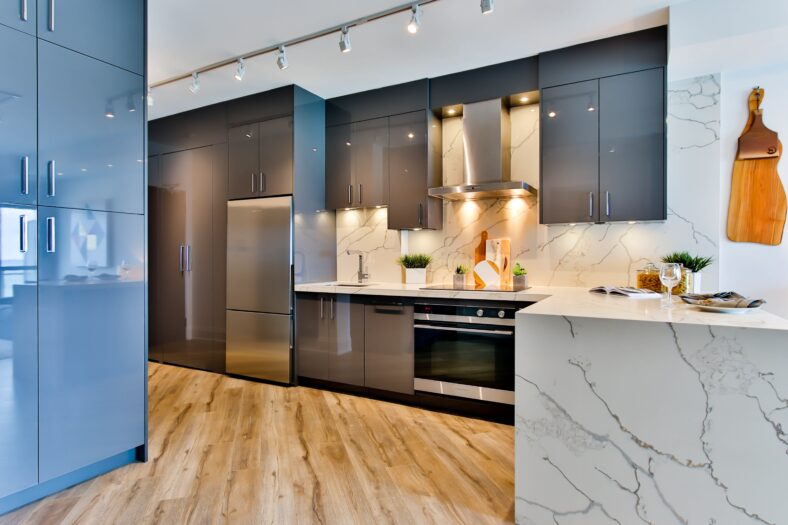Embracing Elegance and Functionality: A Journey through Interior Design
Introduction: The Essence of Interior Design
Interior design is more than just a mere arrangement of furniture and choosing a color palette; it is the art and science of enhancing the interior of a space to achieve a healthier and more aesthetically pleasing environment for the people using it. This discipline involves a comprehensive understanding of architecture, furniture design, color theory, and spatial arrangements. It is a field that requires not only creativity and an eye for beauty but also a robust comprehension of human behavior and comfort.
History and Evolution
The history of interior decoration spans thousands of years, with evidence found in ancient civilizations across the globe, from the ornate tombs of Egyptian pharaohs to the intricate patterns found in Islamic art and architecture. Throughout the centuries, the pursuit of creating a symbolic and functional living space has evolved, adapting to the changing needs, technologies, and cultural influences of the time. Today, the profession is as diverse as the practitioners it attracts, each bringing a unique perspective and approach to the design of interior spaces.
Understanding Space and Function
A designer must first understand the space they are working with and the function it will serve. This understanding is fundamental to creating a layout that caters to the specific needs of the occupants. The spatial arrangement is pivotal in determining the flow of movement, the accessibility, and the level of interaction among users. A well-designed space is one that effortlessly combines utility with beauty, making daily activities seamless and enjoyable.
Aesthetic Components
The aesthetic appeal of an interior is composed of various elements such as color, texture, light, and furniture. The right combination of these factors can transform a room, influencing mood and ambiance. Color can set a tone, evoke emotions, and even affect perceptions of space. Texture adds depth and interest, making a room feel inviting. Lighting, whether natural or artificial, can highlight architectural features and create dynamics within a space. Furniture serves as both a functional component and a reflection of personal style.
Cultural and Environmental Impact
Interior design doesn’t happen in a vacuum; it’s influenced by the cultural and environmental context in which it exists. Cultural considerations can include traditional motifs, color symbolism, and space usage norms, which bring a sense of place and identity to a project. Environmentally sustainable design has become increasingly important, focusing on energy efficiency, reducing waste, and selecting materials that are environmentally friendly. This holistic approach ensures that the spaces we inhabit are not only beautiful but also responsible and sustainable.
The Role of Technology
In the current era, technology plays a vital role in interior design. From software that allows designers to create 3D renderings of their concepts to smart home devices that can be integrated into the fabric of the space, the possibilities are endless. Technology not only aids in visualizing and planning but also enhances the functionality of the space with innovations like automated lighting, heating, and home entertainment systems.
Psychology of Space
The psychological impact of interior design is profound. The layout, colors, textures, and overall design of an area can affect a person’s mood, productivity, and even health. Designers must consider the psychological needs of the occupants, creating spaces that promote comfort, calm, or stimulation, depending on the intended use. The end goal is to create environments that support the well-being and the psychological needs of those who use them.
Harmony and Balance
Achieving harmony and balance in interior design is often likened to composing a symphony—each element must be carefully considered and orchestrated to create a cohesive whole. This balance is not just about symmetry but also about the visual weight of objects, color distribution, and the rhythm created by repeating elements. A harmonious interior is visually pleasing and contributes to a feeling of well-being.
The Design Process
The process of designing an interior space is methodical. It begins with the conceptualization phase, where ideas are generated, and ends with the execution phase, where those ideas are brought to life. Between these two phases lie several steps, including research, planning, budgeting, sourcing of materials, and collaboration with other professionals such as architects, engineers, and craftsmen. Each step is crucial and requires attention to detail to ensure the success of the project.
Emphasizing Individuality
An essential aspect of interior design is the personal touch it allows. Spaces are tailored to reflect the personality and preferences of the individuals who inhabit them. This customization makes each project unique, turning homes into personal sanctuaries and workplaces into environments that inspire creativity and productivity.
Future Trends and Innovation
As we look to the future of interior design, we can anticipate a continued emphasis on sustainability, inclusivity, and wellness. Designers are exploring new materials, experimenting with novel concepts, and embracing technology to create spaces that are not only visually stunning but also cater to a broader range of needs and preferences. The future promises to be an exciting time for interior design, with innovation at its core.
Conclusion: The Art of Living Well
Interior design is about creating spaces that are not just functional or beautiful, but spaces that enhance our lives. Through thoughtful design, we can shape our environments to reflect our values, meet our needs, and express our individuality. It’s an art form that touches every aspect of our daily lives, from the comfort of our homes to the functionality of our workplaces. As we continue to explore and push the boundaries of what is possible within interior spaces, we are reminded that at the heart of interior design is the pursuit of living well.
